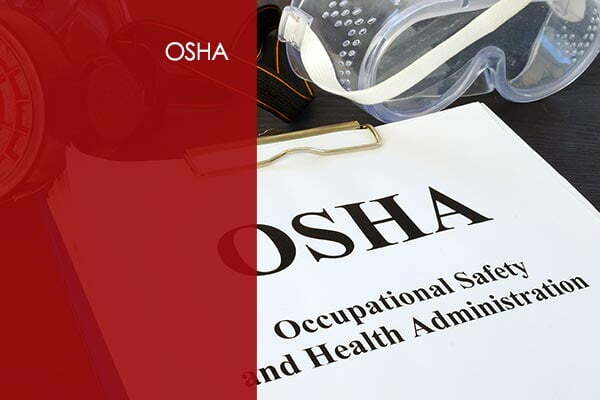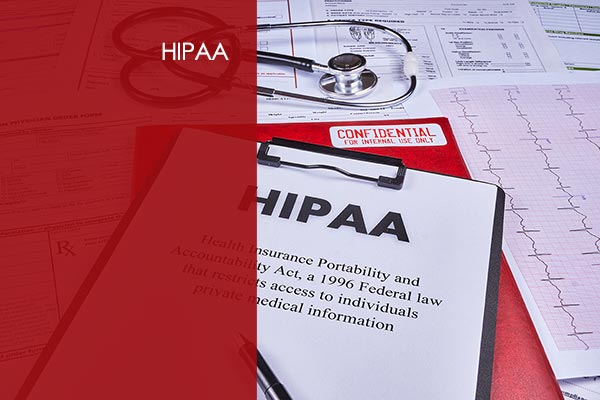With over 20 years of experience in the ever-evolving healthcare landscape, I recognize the critical nature of regulatory compliance and safety protocols. The intertwined worlds of HIPAA (Health Insurance Portability and Accountability Act) and OSHA (Occupational Safety and Health Administration) are more relevant today than ever. That’s why I’ve written this comprehensive guide on “HIPAA and OSHA Training: 10 Essential Tips for Healthcare Professionals.” Ensuring that you are well-versed in these regulations is not just about fulfilling legal obligations; it’s about safeguarding the privacy and well-being of patients and healthcare staff alike. In the following article, we’ll explore the vital intersection of HIPAA and OSHA, providing actionable insights that stem from decades of firsthand knowledge and expertise.
The Importance of HIPAA and OSHA Training
Understanding HIPAA: Protecting Patient Privacy
HIPAA, or the Health Insurance Portability and Accountability Act, is central to protecting the confidentiality of patient information in the healthcare industry. Having worked closely with healthcare providers and regulators, I’ve seen firsthand the essential nature of these protections.
- Protection of Patient Data: HIPAA sets the standard for safeguarding personal health information (PHI).
- Legal Compliance: Failure to comply can result in severe penalties and legal actions.
Dr. Emily Carson, a noted healthcare policy expert, once stated, “HIPAA isn’t just about regulations; it’s about preserving the trust between patients and healthcare providers.”
Real-Life Example: In my 20 years of experience, I witnessed a case where a hospital faced a significant fine due to lax privacy controls. The enforcement of HIPAA guidelines not only helped rectify the situation but also enhanced the institution’s reputation.

OSHA Training Course
Are you ready to elevate your understanding of safety and compliance? Our Outreach Training Program, tailored to California’s Occupational Safety & Health Administration (Cal/OSHA) General Industry Standards, is the key to unlocking professional growth and ensuring your team’s success. Don’t miss this opportunity to invest in essential training for you or your team!
OSHA Guidelines: Ensuring Safety in Healthcare Environments
The Occupational Safety and Health Administration (OSHA) sets the stage for safety in healthcare. These guidelines play a crucial role in maintaining a safe environment for both patients and staff.
- Workplace Safety Standards: OSHA regulations help protect healthcare workers from potential hazards.
- Regular Inspection and Compliance: OSHA’s frequent inspections ensure adherence to safety protocols.
James O’Reilly, a veteran OSHA inspector, aptly put it: “OSHA’s role in healthcare goes beyond rules and regulations; it’s about creating a culture where safety is a priority.”
The Intersection of Privacy and Safety: HIPAA and OSHA Training
The integration of HIPAA and OSHA guidelines signifies the symbiotic relationship between privacy and safety in healthcare.
- Coordinated Compliance: Successful HIPAA and OSHA Training ensures a seamless fusion of privacy protections with safety protocols.
- Enhanced Patient Care: The alignment of these regulations leads to a holistic approach to patient care.
As healthcare management expert Sarah Thompson expressed, “HIPAA and OSHA Training aren’t separate entities; they work together to create a healthcare environment that respects privacy while prioritizing safety.”
The significance of HIPAA and OSHA Training cannot be overstated. By understanding and implementing these guidelines, healthcare providers can create a trustworthy and safe environment for all involved. The blend of privacy (HIPAA) and safety (OSHA) sets the stage for excellence in healthcare, a principle I’ve upheld and witnessed transform lives over two decades in the industry.
10 Essential Tips for Healthcare Professionals
Tip 1: Understanding the Fundamentals of HIPAA Compliance
HIPAA compliance is not a one-time task but an ongoing responsibility.
- Training Programs: Regular HIPAA and OSHA Training sessions keep staff updated on the latest requirements.
- Clear Guidelines: Create and disseminate clear guidelines regarding patient privacy.
Dr. Laura Simmons, an authority on healthcare regulations, emphasizes, “Comprehensive understanding of HIPAA is the foundation of trust in healthcare.”
Tip 2: Implementing Safety Protocols as per OSHA Guidelines
Safety is paramount in healthcare, and OSHA guidelines are instrumental in this regard.
- Customized Training: Tailor HIPAA and OSHA Training to your specific healthcare setting.
- Regular Audits: Ensure that safety protocols are consistently followed.
Health and safety consultant Marcus Greene notes, “OSHA isn’t just about rules; it’s a framework for fostering a culture of safety.”
Tip 3: Continuous Education and Training
With ever-changing regulations, continuous education in HIPAA and OSHA Training is crucial.
- Ongoing Workshops: Keep staff up-to-date with regular workshops and online courses.
- Certificates and Recognition: Encourage completion of training through incentives.
As educational strategist Anita Ferguson puts it, “Continuous training in HIPAA and OSHA keeps healthcare ahead of the curve.”
Tip 4: Developing a Culture of Compliance
Compliance should be part of the organizational culture.
- Leadership Engagement: Leaders should model HIPAA and OSHA compliance.
- Clear Expectations: Set and communicate expectations regularly.
Renowned compliance officer Thomas Blake believes, “A culture of compliance starts at the top but thrives at every level.”
Tip 5: Risk Assessment and Management
Proactive risk management is vital in healthcare.
- Identify Potential Risks: Regularly assess risks related to HIPAA and OSHA compliance.
- Implement Mitigation Strategies: Develop plans to address identified risks.
Risk management expert Helena Mitchell states, “Understanding risk is the first step in mastering HIPAA and OSHA Training.”

HIPAA Training Course
Ready to master the critical aspects of HIPAA, from Fraud and Abuse to the Security and Privacy Rules? Our HIPAA Training Course offers a detailed overview and vital insight into General Administrative Requirements. Elevate your knowledge and safeguard your professional future with our comprehensive program!
Tip 6: Ensuring Patient Privacy
Patient privacy is the heart of HIPAA compliance.
- Regular Staff Training: HIPAA and OSHA Training sessions must emphasize privacy.
- Monitor Access to Information: Implement strict controls on who can access patient data.
Dr. Michael Vinson asserts, “Patient privacy is not an option; it’s a fundamental right safeguarded by HIPAA.”
Tip 7: Utilizing Technology to Improve Compliance
Leverage technology to ensure compliance with HIPAA and OSHA Training.
- Use Compliant Software: Employ technology that aligns with HIPAA and OSHA guidelines.
- Automate Compliance Monitoring: Utilize software to monitor and manage compliance.
Tech consultant Olivia Harper claims, “Technology isn’t just a tool; it’s a partner in compliance.”
Tip 8: Engaging with Regulatory Authorities
Open communication with regulators fosters better compliance.
- Regular Reporting: Stay transparent with regulatory bodies.
- Seek Guidance When Needed: Don’t hesitate to consult regulators on HIPAA and OSHA Training compliance.
Regulatory expert Alex Jensen emphasizes, “Engagement with regulatory authorities simplifies the path to compliance.”
Tip 9: Learning from Industry Best Practices
Learn from others’ successes and failures in HIPAA and OSHA compliance.
- Networking and Conferences: Engage with peers to learn from their experiences.
- Benchmarking: Regularly assess how your practices compare to industry standards.
Healthcare leader Sophia Nelson argues, “Learning from others accelerates our own success in HIPAA and OSHA Training.”
Tip 10: Encouraging Team Collaboration and Communication
Collaborative efforts lead to more robust compliance.
- Cross-Department Collaboration: Foster collaboration between different departments.
- Open Communication Channels: Encourage open dialogue about HIPAA and OSHA Training issues.
Communication expert James Baxter believes, “In healthcare, collaboration isn’t just beneficial; it’s essential.”
These 10 essential tips draw from 20 years of experience in the field, offering a roadmap for effective HIPAA and OSHA Training. By adhering to these principles, healthcare organizations can build a culture of compliance and safety, benefitting both patients and staff alike.

OSHA Training
Seeking mastery in OSHA General Industry Standards? Whether you’re an individual aspiring to enhance your skillset or a leader aiming to empower your team, our Outreach Training Program is the stepping stone to a safer, more compliant workplace. Join us today, and transform your understanding of California’s Occupational Safety & Health Administration.
Challenges in Implementing HIPAA and OSHA Guidelines
The road to full compliance with HIPAA and OSHA can be fraught with challenges. However, with the right strategies, these challenges can be overcome.
Common Hurdles in HIPAA and OSHA Training
Drawing from two decades of professional experience, I can identify several recurring obstacles that organizations face:
- Complex Regulations: Navigating the intricate landscape of HIPAA and OSHA guidelines.
- Resource Constraints: Finding the time, staff, and budget to conduct thorough HIPAA and OSHA Training.
- Technology Integration: Aligning existing technology with compliance requirements.
- Resistance to Change: Overcoming staff resistance to new policies and procedures.
As renowned healthcare compliance analyst Dr. Karen Wright observes, “The path to HIPAA and OSHA compliance is rarely straightforward, but understanding the common roadblocks can prepare an organization for success.”
Solutions and Strategies to Overcome These Challenges
Fortunately, these challenges don’t have to be insurmountable. Below are some strategies:
1. Streamlining Compliance with Expert Guidance
- Consult with Specialists: Engage experts in HIPAA and OSHA Training to guide your efforts.
- Utilize Tools and Resources: Leverage compliance toolkits and training platforms.
Dr. Raymond Becker, a leader in healthcare compliance, affirms, “Expert guidance in HIPAA and OSHA Training is not a luxury; it’s a necessity.”
2. Investing in Comprehensive Training Programs
- Regular Training Sessions: Schedule ongoing training to keep staff informed.
- Tailored Curriculum: Customize training to address the specific needs and challenges of your organization.
Compliance trainer Ellen Foster emphasizes, “Investing in training is investing in success.”
3. Leveraging Technology for Compliance
- Invest in Compliance Software: Choose software that aligns with HIPAA and OSHA Training requirements.
- Monitor Compliance: Use technology to keep track of progress and make adjustments as needed.
Technology expert Paul Harrison notes, “Technology is the bridge that turns compliance challenges into opportunities.”
4. Building a Culture That Embraces Change
- Leadership Support: Leaders must support and participate in HIPAA and OSHA Training efforts.
- Communication and Collaboration: Encourage open dialogue and cross-departmental collaboration to foster acceptance of new policies.
Organizational psychologist Dr. Vanessa Fields asserts, “A culture that embraces change sees challenges not as obstacles but as catalysts for growth.”
The challenges in implementing HIPAA and OSHA guidelines can be formidable but are by no means insurmountable. With proper understanding, strategic planning, investment in training, technology, and a culture that welcomes change, organizations can turn compliance into an asset rather than a hurdle. The path to HIPAA and OSHA Training excellence, though complex, can be navigated successfully with focus, commitment, and innovation.
Conclusion: Embracing the Journey of Compliance
The process of achieving full compliance with HIPAA and OSHA guidelines is neither simple nor finite. It’s a continual journey that requires dedication, adaptability, and a commitment to excellence. Through the insights shared in this article, several key takeaways emerge:
- Understanding the Landscape: Recognizing the challenges and complexities of HIPAA and OSHA Training is the first step towards building an effective compliance program.
- Investing in Training: Continuous investment in tailored HIPAA and OSHA Training ensures that staff are knowledgeable and competent. As healthcare compliance expert Dr. Timothy Grant states, “Education is the cornerstone of compliance.”
- Leveraging Technology: Utilizing cutting-edge tools and technology simplifies compliance efforts and aligns them with modern practices.
- Creating a Culture of Compliance: Encouraging a culture that values HIPAA and OSHA compliance fosters an environment where regulations are not seen as burdens but as essential to patient care and safety.
- Embracing Collaboration and Communication: Encouraging teamwork and open dialogue ensures that compliance is a shared responsibility, strengthening the organization as a whole.
- Ongoing Commitment to Improvement: HIPAA and OSHA Training is not a static endeavor. With ever-changing regulations and evolving industry standards, ongoing commitment to improvement is vital. This requires regular assessment, adaptation, and alignment with best practices.
- The Value of Expert Guidance: Engaging experts and learning from peers in the industry can turn potential stumbling blocks into stepping stones.
Emphasizing the ongoing need for rigorous training is crucial, as it’s the lifeline that connects all other aspects of compliance. In the words of training specialist Dr. Amanda Clarke, “Rigorous training is not a mere obligation; it’s the heartbeat of compliance and excellence.”
The journey towards complete adherence to HIPAA and OSHA guidelines is a path marked with challenges and opportunities. It’s a testament to the healthcare organization’s commitment to excellence, patient trust, and employee safety. In embracing this journey with focus, innovation, and an unwavering commitment to ongoing training, healthcare providers not only comply with the law but also forge a path that elevates the entire industry.
Through diligent adherence to the principles of HIPAA and OSHA Training, healthcare organizations can transform compliance from a complex challenge into a dynamic force for excellence and growth. It’s more than a regulatory requirement; it’s a call to uphold the highest standards of care, safety, and integrity in healthcare.

HIPAA Training Course
Take control of your career with our HIPAA Training Course – Fraud and Abuse. Providing a thorough understanding of PL 104-191, Private Rule, Security Rule, Enforcement Rule, and Omnibus rule, this training is your path to expertise in security and privacy regulations. Seize the opportunity to learn from the best and enrich your knowledge today!
FAQ Section: Understanding HIPAA and OSHA Training – Your Questions Answered
What exactly does the HIPAA and OSHA Training Course cover?
The HIPAA and OSHA Training Course provides a comprehensive understanding of the Health Insurance Portability and Accountability Act (HIPAA) regulations and the Occupational Safety and Health Administration (OSHA) guidelines. This includes topics such as fraud and abuse prevention, security and privacy regulations, enforcement rules, and general administrative requirements.
Who should enroll in the HIPAA and OSHA Training?
HIPAA and OSHA Training is suitable for healthcare professionals, administrators, compliance officers, safety managers, and anyone involved in the healthcare industry who needs to understand and comply with these regulations.
How will HIPAA and OSHA Training benefit my career?
Engaging in HIPAA and OSHA Training will enhance your understanding of essential legal and safety guidelines. It can improve your professional skills, ensure compliance within your organization, and make you more valuable in the healthcare industry.
Is there any prior knowledge required before enrolling in the HIPAA and OSHA Training Course?
While having some background in healthcare regulations can be beneficial, the HIPAA and OSHA Training Course is designed to accommodate both beginners and experienced professionals. The course provides foundational knowledge as well as advanced insights.
How can I stay updated with the latest changes in HIPAA and OSHA regulations after completing the training?
Our HIPAA and OSHA Training includes access to regular updates, resources, and continued support to ensure you stay informed about any changes or amendments to the regulations. This will help you maintain compliance and stay ahead in your professional field.
Advance Your IT Career
with ITU Online's LIFETIME Training
Unlock the full potential of your IT career with ITU Online’s comprehensive online LIFETIME Training Library. Our expert-led courses will help you stay ahead of the curve in today’s fast-paced tech industry.
























